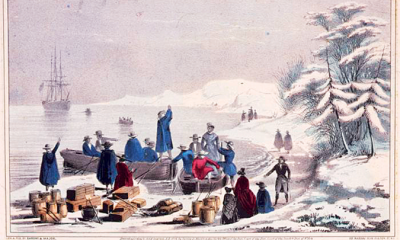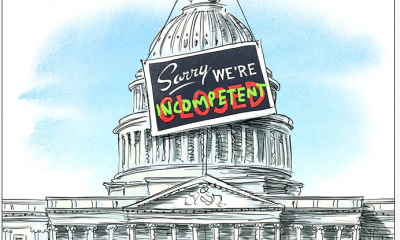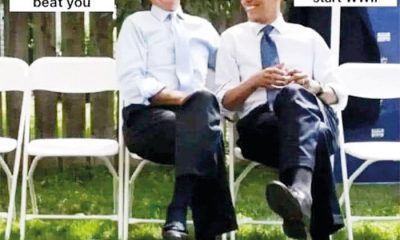Features
REVIEW OF A BOOK BY RANJAN GOONERATNE
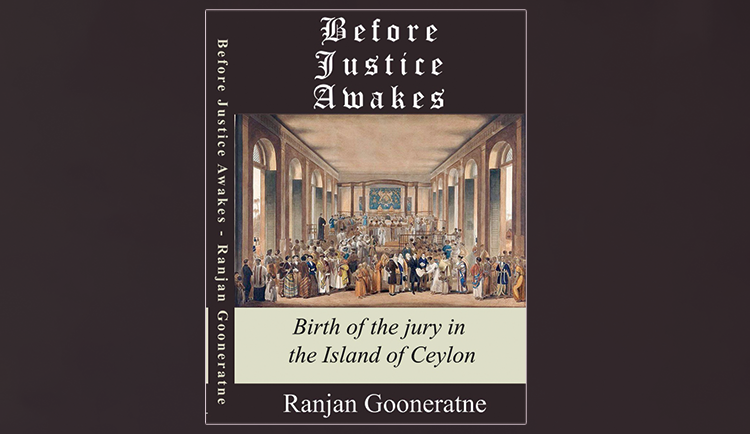
BEFORE JUSTICE AWAKES
by Vijaya Chandrasoma
Ranjan Gooneratne, who Ranjan Gooneratne, who practices law in a legal environment in Sri Lanka unrecognizable to the one in which he received his training over six decades ago, has written a book deploring the depths to which this once majestic profession has fallen.
Gooneratne was born during colonial times to an elite Ceylonese legal family. His father was the late A. C. Gooneratne, Q.C., a former President of the Bar Council of Ceylon. The son was always drawn to the intellectual approach of the profession displayed by his father, who instilled in him the belief that discipline and hard work were the only paths to success in a noble profession.
Gooneratne received his secondary education at St Thomas’ College, Mt. Lavinia. As was the custom for the scions of the upper crust of Ceylonese society, he proceeded to England, the Motherland, to complete his university education. He achieved admittance to St Catherine’s College at the University of Oxford, where he graduated with an Honours Master’s Degree in Jurisprudence. He was called to the Bar at Grays Inn, London and admitted and enrolled in the Ceylonese Bar in 1964. He has been actively practicing law in since then, mainly at Hulftsdorp and the Panadura Courts, where his portrait was recently unveiled to honour 50 years of dedicated service.
Gooneratne is also a devotee and student of the Dhamma, and has written a series of erudite, sometimes controversial articles about the teachings of the Buddha. He also delivers regular discourses on the Dhamma at the YMBA in Colombo. His open-mindedness, his argumentative opinions – the essence of that noble philosophy – and impish sense of humour has often succeeded in annoying the hell out of those in Sri Lankan society who remain stuck inside the box of religious bigotry.
Gooneratne has indeed undertaken a courageous enterprise in the compilation of a history of the legal profession of Ceylon from the beginning of the 19th century, his fascination of a subject evident in his prolific writings. Readers, especially those who have similar interests, will be happy with the successful result of the risk he has taken, in the form of an eminently readable book. One of special interest to those of us with a proclivity for a whisper of prurient dirty linen, beautifully described in Mr. Kanag-Iswaran’s Foreword, as “stories galore of life at the Bar, as intimate as the rustle of silk bedsheets”.
Gooneratne was admitted to the Bar nearly sixty years ago, during an era when H.V. Perera dominated the Appellate Courts, and lawyers like C. Thiyagalingam and Guy Wikramanayake excelled as trial lawyers. “Great lawyers who moulded the law of the land and led the judges along the right path”. Their legacy was the unparalleled mastery of the law and relentless pursuit of justice. Gooneratne says that what impressed him most was “their facility and felicity of the English language – products of truly great minds”.
Gooneratne laments, “how was it possible for the (Ceylon) Judiciary and the Bar, which were the pride of the (British) colonies and thereafter the Commonwealth, descend to the depths they have today?”
He places the blame for this deterioration of the profession on the falling standards of both the methods of instruction and scholarship at the Law College. Students hardly read a text book on jurisprudence or case law, depending instead on the notes provided to them by a peon. In particular, little attention is paid by today’s law students, educated as they are in the vernacular, to the rich history of a noble profession.
According to Gooneratne, the deterioration in standards has not been caused solely by the change in the medium of instruction. He argues that the deterioration is mainly due to a complete lack of discipline and mediocrity of instruction, which is evident today even at the highest levels of jurisprudence in Sri Lanka.
Gooneratne has grappled with this deeply unsettling problem throughout his long career. He realizes now that he had entered the Bar during the twilight years of its golden age in Ceylon. He deplores the fact that within a few years, the majesty of that profession has been swept away, an edifice built with such loving care now at a state of near-collapse. In his book, he has highlighted some of the causes for the collapse, and hopes that the relevant authorities will address these concerns.
In conclusion, Gooneratne states, “There is a deep human wish that justice should prevail in the world, and that justice is done. Society is doomed when the ontology of justice fails.
“For the Bench and the Bar to be held in the highest esteem, it should be the perception of the general public their judges are men of integrity whose judgments should be given in settled legal principles”.
On a lighter note, Gooneratne lists as one of his major achievements the avoidance of the pitfalls of marriage, and the freedom it gives him to pursue his chosen pleasures of Bridge and Golf. In spite of this studied indifference, though, he has remained, over the past few decades, the chosen, if seemingly Platonic, “Plus One” of many attractive widows and divorcees of Colombo at a variety of social events. Which has led many of his more inquisitive and envious friends, myself included, to conjecture on which letter of the alphabetic spectrum Ranjan falls, on the L, G, B, T, Q rainbow of sexual orientation.
Features
Electoral reform and abolishing the executive presidency
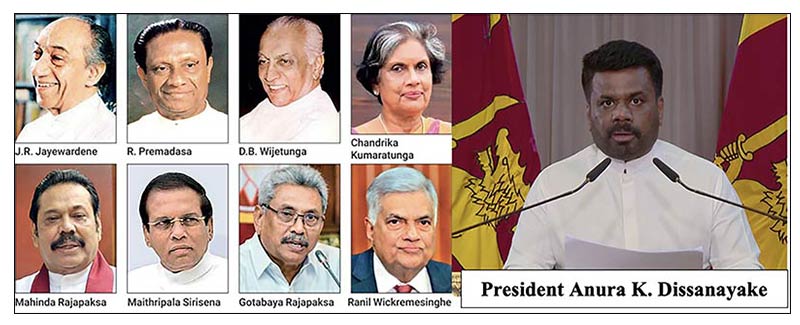
by Dr Jayampathy Wickramaratne,
President’s Counsel
The Sri Lankan Left spearheaded the campaign against introducing the executive presidency and consistently agitated for its abolition. Abolition was a central plank of the platform of the National People’s Power (NPP) at the 2024 presidential elections and of the Janatha Vimukthi Peramuna (JVP) at all previous elections.
Issues under FPP or a mixed system
President Anura Kumara Dissanayake, participating in the ‘Satana’ programme on Sirasa TV, recently reiterated the NPP’s commitment to abolition and raised four issues related to accompanying electoral reform.
The first is that proportional representation (PR) did not, except in a few instances, give the ruling party a clear majority, resulting in a ‘weak parliament’. Therefore, electoral reform is essential when changing to a parliamentary form of government.
Secondly, ensuring that different shades of opinion and communities are proportionally represented may be challenging under the first-past-the-post system (FPP). For example, as the Muslim community in the Kurunegala district is dispersed, a Muslim-majority electorate will be impossible. Under PR, such representation is possible, as happened in 2024, with many Muslims voting for the NPP and its Muslim candidate.
The third issue is a difficulty that might arise under a mixed (FPP-PR) system. For example, the Trincomalee district returned Sinhala, Tamil and Muslim candidates at successive elections. In a mixed system, territorial constituencies would be fewer and ensuring representation would be difficult. For the unversed, there were 160 electorates that returned 168 members under FPP at the 1977 Parliamentary elections.
The fourth is that certain castes may not be represented under a new system. He cited the Galle district where some of the ‘old’ electorates had been created to facilitate such representation.
It might straightaway be said that all four issues raised by President Dissanayake have substantial validity. However, as the writer will endeavour to show, they do not present unsurmountable obstacles.
Proposals for reform, Constitutional Assembly 2016-18
Proposals made by the Steering Committee of the Constitutional Assembly of the 2015 Parliament and views of parties may be referred to.
The Committee proposed a 233-member First Chamber of Parliament elected under a Mixed-Member Proportional (MMP) system that seeks to ensure proportionality in the final allocation of seats. 140 seats (60%) will be filled by FPP. The Delimitation Commission may create dual-member constituencies and smaller constituencies to render possible the representation of communities of interest, whether racial, religious or otherwise. 93 compensatory seats (40%) will be filled to ensure proportionality. Of these, 76 will be filled by PR at the provincial level and 12 by PR at the national level, while the remaining 5 seats will go to the party that secures the highest number of votes nationally.
The Sri Lanka Freedom Party agreed with the proposals in principle, while the Joint Opposition (the precursor of the Sri Lanka Podujana Peramuna) did not make any specific proposals. The Tamil Nationalist Alliance was willing to consider any agreement between the two main parties on the main principles in the interest of reaching an acceptable consensus.
The Jathika Hela Urumaya’s position was interesting. If the presidential powers are to be reduced, the party obtaining the highest number of votes should have a majority of seats. Still, the representation of minor political parties should be assured. Therefore, the number of seats added to the winning party should be at the expense of the party placed second.
The All Ceylon Makkal Congress, Eelam People’s Democratic Party, Sri Lanka Muslim Congress and the Tamil Progressive Alliance jointly proposed that the principles of the existing PR system be retained but with elections being held for 40 to 50 electoral zones and a 2% cut-off point. The Janatha Vimukthi Peramuna was for the abolition of the executive presidency and, interestingly, suggested a mixed electoral system that ensures that the final outcome is proportional.
CDRL proposals
The Collective for Democracy and Rule of Law (CDRL), a group of professionals and academics that included the writer, made detailed proposals on constitutional reform in 2024. It proposed returning to parliamentary government. The legislature would be bicameral, with a House of Representatives of 200 members elected as follows: 130 members will be elected from territorial constituencies, including multi-member and smaller constituencies carved out to facilitate the representation of social groups of shared interest; Sixty members will be elected based on PR at a national or provincial level; Ten seats would be filled through national-level PR from among parties that failed to secure a seat through territorial constituencies or the sixty seats mentioned above, enabling small parties with significant national presence without local concentration to secure representation. Appropriate provisions shall be made to ensure adequate representation of women, youth and underrepresented interest groups.
The writer’s proposal
The people have elected the NPP leader as President and given the party a two-thirds majority in Parliament. It is, therefore, prudent to propose a system that addresses the concerns expressed by the President. Otherwise, we will be going around in circles. The writer believes that the CDRL proposals, suitably modified, present a suitable basis for further discussion.
While the people vehemently oppose any increase in the number of MPs, it would be challenging to address the President’s concerns in a smaller parliament. The writer’s proposal is, therefore, to work within a 225-member Parliament.
The writer proposes that 150 MPs be elected through FPP and 65 through national PR. 10 seats would be filled through national-level PR from among parties that have not secured a seat either through territorial constituencies or the 65 seats mentioned above. The Delimitation Commission shall apportion 150 members among the various provinces proportionally according to the number of registered voters in each province. The Commission will then divide each province into territorial constituencies that will return the number of MPs apportioned. The Commission may create smaller constituencies or multi-member constituencies to render possible the representation of social groups of shared interest.
The 65 PR seats will be proportionally distributed according to the votes received by parties nationally, without a cut-off point. The number of ‘PR MPs’ that a party gets will be apportioned among the various provinces in proportion to the votes received in the provinces. For example, if Party A is entitled to 10 PR seats and has obtained 20% of its total vote from the Central Province, it will fill 2 PR seats from candidates from that Province, and so on. Each party shall submit names of potential ‘PR MPs’ from each of the provinces where the party contests at least one constituency in the order of its preference, and seats allotted to that party in a given province are filled accordingly. The remaining 10 seats will be filled by small parties as proposed by the CDRL.
How does the proposed system address President Dissanayake’s concerns?
The President’s concern that PR will result in a weak parliament is sufficiently addressed when a majority of MPs are elected under FPP.
Before dealing with the other three issues, it must be said that voters do not always vote for candidates from their communities. A classic example is the 1965 election result in Balapitiya, a Left-oriented constituency dominated by a particular caste. The Lanka Sama Samaja Party boldly nominated L.C. de Silva, from a different caste, to contest Lakshman de Silva, a long-standing MP who crossed over to bring down the SLFP-LSSP coalition. Balapitiya voters punished Lakshman and elected L.C.
Multi-member constituencies have generally served their purpose but not always. The Batticaloa dual-member constituency had been created to ‘render possible’ the election of a Tamil and a Muslim. At the 1970 elections, the four leading candidates were Rajadurai of the Federal Party, Makan Markar of the UNP, Rahuman of the SLFP and the independent Selvanayagam. The Muslim vote was closely split between Macan Markar and Rahuman, resulting in both losing. Muslim voters surely knew that a split might deny Muslim representation but preferred to vote according to their political convictions.
The President’s second concern that a dispersed community may not get representation under FPP will also be addressed better under the proposed system. Taking the same Kurunegala district as an example, a party could attract Muslim voters by placing a Muslim high up on the PR list. Similarly, a Tamil party could place a candidate from a depressed community high up in its Northern Province PR list to attract voters of depressed communities and ensure their representation.
The third concern was that the number of electorates would be less under a mixed system, making it challenging to carve out electorates to facilitate the representation of communities, the Trincomalee district being an example. Empowering the Delimitation Commission to create smaller electorates assuages this concern. It will not be Trincomalee District but the whole Eastern Province to which a certain number of FPP MPs will be allotted, giving the Commission broad discretion to carve out electorates. The Commission could also create multimember constituencies to render possible the representation of communities of interest. The fourth concern about caste representation would also be addressed similarly.
It may be noted that the difference between the number of FPP MPs (150) under the proposed system is only 10% less than that under the delimitation of 1975 (168). Also, there will be no cut-off point for PR as against the present cut-off of 5%. This will help small as well as not-so-small parties. Reserving 10 seats for small parties also helps address the concerns of the President.
No spoilers, please. Don’t let electoral reform be an excuse for a Nokerena Wedakama
The writer submits the above proposals as a basis for discussion. While a stable government and the representation of various interests are essential, abolishing the dreaded Executive Presidency is equally important. These are not mutually exclusive.
President Dissanayake also said on Sirasa TV that once the local elections are over, the NPP would first discuss the issue internally. This is welcome as there would be a government position, which can be the basis for further discussion.
This is the first time a single political party committed to abolition has won a two-thirds majority. Another such opportunity will almost certainly not come. Let there be no spoilers from either side. Let electoral reform not be an excuse for retaining the Executive Presidency. Let the Sinhala saying ‘nokerena veda kamata konduru thel hath pattayakuth thava tikakuth onalu’ not apply to this exercise (‘for the doctoring that will never come off, seven measures and a little more, of the oil of eye-flies are required’—translation by John M. Senaveratne, Dictionary of Proverbs of the Sinhalese, 1936).
According to recent determinations of the Supreme Court, a change to a parliamentary form of government requires the People’s approval at a referendum. While the NPP has a two-thirds majority, it should not take for granted a victory at a referendum held late in the term of Parliament for, then, there is the danger of a referendum becoming a referendum on the government’s performance rather than one on the constitutional bill, with opposition parties playing spoilers. If the government wishes to have the present form of government for, say, four years, it could now move a bill for abolition with a sunset clause that provides for abolition on a specified date. Delay will undoubtedly frustrate the process and open the government to the accusation that it indulged in a ‘nokerena vedakama’.
Features
Did Rani miss manorani ?
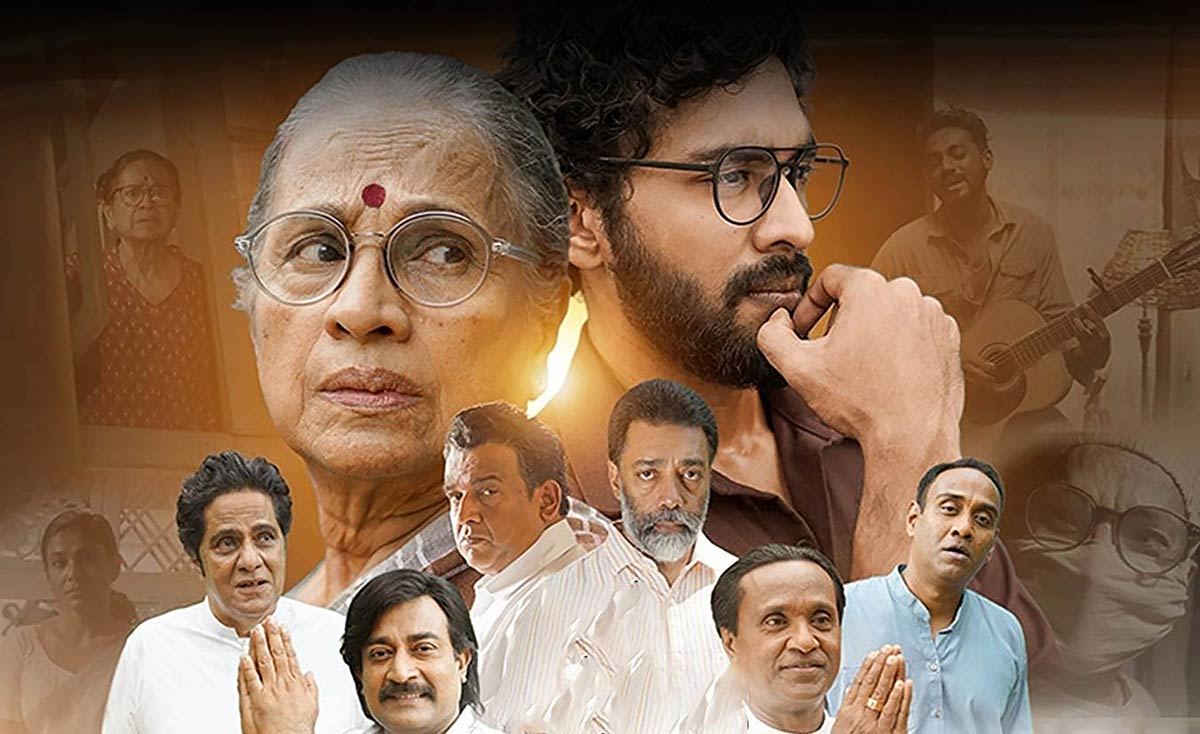
(A film that avoids the ‘Mannerism’ of a Biopic: Rani)
by Bhagya Rajapakshe
bhagya8282@gmail.com
This is only how Manorani sees Richard. It doesn’t have a lot of what Richard did. Although Manorani is not someone who pays attention to the happenings in the country. It was only after her son was kidnapped that she began to feel that this was happening in the country.She had human emotions. But she was a person who smoked cigarettes and drank whiskey and lived a merry life.”
(Interview with “Rani” film director Ashoka Handagama by Upali Amarasinghe – 02.02.2025 ‘Anidda’ weekend newspaper, pages 15 and 19)
The above statement shows the key attitude of the director of the movie, “Rani” towards the central character of the film, Dr. Manorani Sarawanamuttu. This statement is highly controversial. Similarly, the statement given by the director to Groundviews on 30.01.2025 about capturing the depth of Rani’s character shows that he has done so superficially, frivolously?
A biopic is a specific genre of cinema. This genre presents true events in the life of a person (a biography), or a group of people who are currently alive or who belong to history with recognisable names. The biopic genre often artistically and cinematically explores keenly the main character along with a few secondary characters connected to the central figure. World cinema is proof that even if the characters are centuries old, they are carefully researched and skilled directors take care to weave the biographies into their films without causing any harm or injustice to the original character.
According to the available authentic reports, Manorani Saravanamuthu was a professionally responsible medical doctor. Chandri Peiris, a close friend of her family, in his feature article on Manorani in the ‘Daily Mirror’ newspaper on 06th November 2021, says this about her:
“She was a doctor who had her surgeries in the poorest areas around Colombo which made her popular with communities who preferred their women to be seen by female doctors. She had a wonderful manner with her patients which my mother described by saying, ‘looking at her is enough to make you well …. When it came to our outlandish group of friends, she was always there to steer many of us through some very personal issues such as: unplanned pregnancies, teenage pregnancies, mental breakdowns, STD’s, young lovers who ran away and married, depression, circumcisions, break-ups, fractures, dance injuries, laryngitis (especially among the actors and singers) fevers, pimples, and even the odd boil on the bum.”
But the image of Rani depicted by Handagama in his film is completely different from this. According to the film, a major feature of her life consisted of drinking whiskey and smoking cigarettes. Her true role is unspoken, hidden in the film. A grave question arises as to whether the director spent adequate time doing the research? to find out who Manorani really was. In his article Chandri Peiris further says the following about Manorani:
“Soon after the race riots in 1983, Manorani (along with Richard) helped a great many Sri Lankan Tamils to find refuge in countries all over the world. Nobody knew about this. But all of us who used to hang around their house kept seeing unfamiliar people come over to stay a few days and then leave. Among them were the three sons of the Master-in-Charge of Drama at S. Thomas’ College, who were swiftly sent abroad by the tireless efforts of this mother and son. It was then that we worked out that their home was a safehouse. … Manorani was vehemently opposed to the terror wreaked by the LTTE and always wanted Sri Lanka to be one country that was home to the many diverse cultures within it. When the ethnic strife developed into a full-on war with those who wanted to create a separate state for Tamil Eelam, she remained completely against it.”
According to the director of the film, if Rani had no awareness of what was happening in the country and the world, how could she have helped the victims survive and leave the country during that life-threatening period? It is clear from all this that the director has failed to fully study the character of Manorani and what she did. There is a scene where Manorani watches a Sinhala stage play with much annoyance and on her way back home with Richard, she is shown insensitively avoiding Richard’s friend Gayan being assaulted by a mob. This demeanour does not match the actual reports and information published about Manorani. How did the director miss these records? It shows his indifference to researching background information for a film such as this. He clearly does not think that research is essential for a sharp-witted artist in creating his artwork. In his own words, he told the Anidda newspaper:
“But the information related to this is in the public domain and the challenge I had was to interpret that information in the way I wanted. I am not an investigative journalist; My job is to create a work of art. That difference should be understood and made.”
And according to the director, “I was invited to do the film in 2023. The script was written within two to three months and the shooting was planned quickly.” Thus, it is clear that there has been no time to study the inner details related to Manorani, the main character of the film, or the character’s Mannerism. Professor Sarath Chandrajeewa, who published a book with two critical reviews on Handagama’s previous film ‘Alborada’, emphasises in both, that ‘Alborada’ also became weak due to the lack of proper research work’ (Lamentation of the Dawn (2022), pages 46-57).
Directors working in the biopic genre with a degree of seriousness consider it their responsibility to study deeply and construct the ‘mannerism’ of such central characters to create a superior biographical film. For example, in Kabir Khan’s 2021 film ’83’ the actor Tahir Raj Bhasin, who played the role of Sunil Gavaskar, said that it took him six months to study Sunil Gavaskar’s unique style characteristics or Mannerism.
Also, Austin Butler, the actor who played the role of Elvis Presley in the movie ‘Elvis’ directed by Buz Luhrmann and released in 2022, said in a news conference: After he started studying the character of Elvis, he became obsessed with the character, without meeting or talking to his family for nearly one year, while making the film in Australia before, during Covid and after.
‘Oppenheimer’ (2023) was written and directed by Christopher Nolan, in which Cillian Murphy plays the role of Oppenheimer. Nolan read and studied the 700-page story about Oppenheimer called ‘American Prometheus’ . It is said that it took three months to write the script and 57 days for shooting, and finally a two-hour film was created. The rejection of such intense studies by our filmmakers will determine the future of cinema in this country.
Acting is the prime aspect of a movie. The character of Manorani is performed very skillfully in the movie. But certain of her characteristics and mannerism become repetitive and in their very repetitiveness become tiresome to watch. For example, right across the film Manorani is shown smoking, drinking alcohol, sitting and thinking, going towards a window and thinking and smoking again. It would have been better if it had been edited. The audience is thereby given the impression that Manorani lives on cigarettes and whiskey. Although smoking and drinking alcohol is a common practice among some women of Manorani’s social class, it is depicted in the film so repetitively that it creates a sense of revulsion in the viewer. In the absence of close-ups and a play of light and dark, Manorani’s mental states cannot be seen in their intense three dimensionality. It is a question whether the director gave up directing and let the actress play the role of Manorani as she wished. At the beginning of the film, close-ups of Manorani appear with the titles but gradually become normal camera angles in the film. This avoids the use of close-ups of Manorani’s face to show emotion in the most shocking moments in the film. Below are some films that demonstrate this cinematic technique well.
‘Three Colours: Blue’ (1993) French, Directed by Kryzysztof Kies’lowski.
‘Memories in March’
(2010) Indian, Directed by Sanjoy Nag.
‘Manchester by the Sea’
(2016) English, Directed by Keneth Lonergan.
‘Collateral Beauty’
2016) English, Directed by David Frankel.
Certain characters appear in the film without any contribution to building Manorani’s role. Certain scenes such as the Television news, bomb explosions, dialogue scenes where certain characters interview Manorani are not integrated into the film’s narrative and feel forced. The scene with the group of hooligans in a jeep at the end of the film is like a strange tail to the film.
Richard’s sexual orientation, which is hinted at the end of the film by these thugs in the final scene, is an insult to him. It is a great disrespect to those characters to present facts without strong information analysis and to tell the inner life of those characters while presenting a real character through an artwork with real names. The director should not have done such humour and humiliation.
There is some thrill in seeing actors who resemble the main political personalities of that era playing those roles in the film. In this the film has more of a documentary than a fictional quality but it barely marks the socio-political history of this country during the period of terror in 88-89. The character of Manorani was created as a person floating in that history ungrounded, without a sense of gravity.
The film’s music and vocals are mesmerising. But unfortunately, the song ‘Puthune’ (Dearest Son), which has a very strong lyrical composition, melody and singing, is placed at the end of the film, so the audience does not know its strength. This is because the audience starts to leave the cinema as soon as the song starts, when the closing credits scrolled down. If the song had accompanied the scene on the beach where we see Manorani for the last time, the audience would have felt its strength.
Manorani’s true personality was a unique blend of charm, sensitivity, compassion, intelligence, warmth and fun, which enhanced her overall beauty, as evidenced by various written accounts of her. Art critics and historians H. W. Johnson and Anthony F. A Johnson state in their book ‘History of Art’ (2001), “Every work of art tells whether it is artistic or not. And the grammar and structure of the form will signal to us that.”
Features
Precautionary methods; cooked up insults
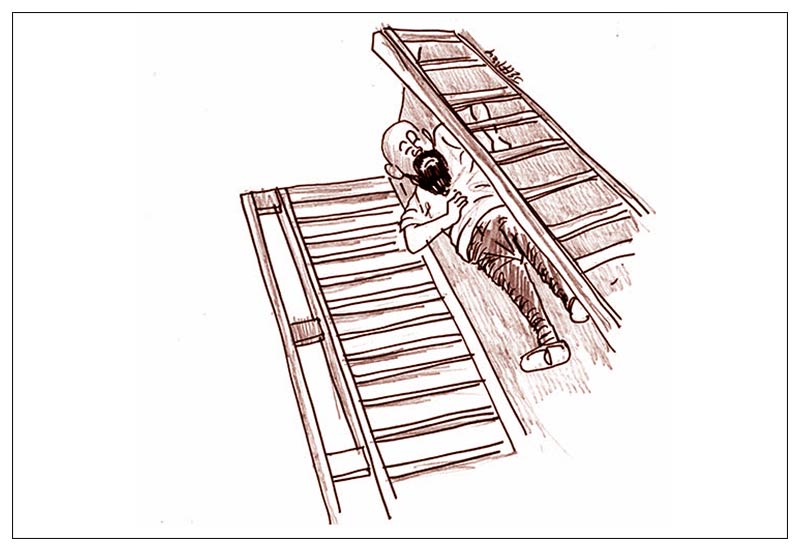
 Topic of the moment is security and its major subsection public security and the country’s security. The police admitted it had lapsed in the tightness of its security when drug kingpin Ganemulla Sanjeeva was shot point blank in the dock at the Colombo Magistrate’s Court. The police however were very speedy in the apprehension of the shooter and several accomplices. The crime was meticulously planned and carried out with a gun smuggled into the court in a hollowed-out book.
Topic of the moment is security and its major subsection public security and the country’s security. The police admitted it had lapsed in the tightness of its security when drug kingpin Ganemulla Sanjeeva was shot point blank in the dock at the Colombo Magistrate’s Court. The police however were very speedy in the apprehension of the shooter and several accomplices. The crime was meticulously planned and carried out with a gun smuggled into the court in a hollowed-out book.
The murder of a lawbreaker as he rode his motorbike with two of his children was another episode in the recent spate of druggies battling it out among themselves and hiring gunmen to do the dirty. Sympathy is all for those two innocent kids who died in the attack.
Then Yukthiya, now competent sleuthing and hard work
Cassandra’s take on this recent heightened gang violence is that the big sharks were apprehended by the police or are about to be and so they, suspecting co-drug gangsters of ratting to law enforcement officers, engage in their killing sprees. And, here is a significant theory of hers: the police and CID are actually doing what they are supposed to do: catch wrongdoers, with no interference from politicians, the new government being such.
Remembered well is project Yukthiya, announced with fanfare by the Minister of Security in Ranil W’s SLPP government – Tiran Alles; seconded by acting IGP Deshabandu Tennakoon, that the drug menace in Sri Lanka would be wiped out. We expected at least one drug lord to be apprehended. No, the police, almost on the rampage, caught very many kuunissas and haalmessas who had a packet of drugs in the pocket, or a woman with a small parcel hidden in her roof. The thalmahas jeering loudly continued to luxuriously lord it in Dubai and other places directing sale of their drugs and murders back home. Cass was sure, in her extravagantly suspicious mind, they paid much to continue living free. Don’t ask her where this sort of kappan went – to which pocket/s.
Very different now. No fanfare, no extravagant promises, no bribe taking. Strong man at head to whom justice, fair play and each-man-does-his-duty are policies followed. More drug lords have been apprehended and extradited to SL in the past couple of months than the two years of Yukthiya. A farce.
But all sensible, concerned Sri Lankans will agree that tighter and extremely competent security must be given to the Prez, PM, Ministers and more so those connected to law, order and being spokesmen for the government; judges and VVIPs in other departments.
The President and the Prime Minister especially must curtail their appearances in public for at least a short while and walkabouts and too close contact with crowds must be taboo. Times are bad for them, not the people of the land as a whole. There definitely are persons who will not blink an eyelid in doubt or hesitation to murder a VVIP in this government and cause chaos in a land that is slowly being led to economic stability and social peace. Yes, Cassandra of today cries like her ancestor but a slightly different tune: “I do NOT want to see blood.
Too much has already been shed: thousands of Lankan youth, police officers; Richard, Lasantha, Wasim Thajudeen and many farmers made suicidal with ban of chemical fertilisers. We have gone through too many hells on earth: uprisings of 1971 and 1989; the LTTE and war; killing of those who were believed to pose competition to a strong man of two to three decades ago. We are at long last on the brink of stability and peace. Long cry but from a sincere and sensible heart, echoing very many others.
A dirty distortion
Let’s go overseas, since our collective blood pressure has risen with the first part of this Cry. Cass got a video clip on her mobile phone with the message: “Very sad to watch”. The scene is purportedly of the end of the inauguration of Trump as 47th US President on Monday January 20, 2025. On the last step stands Trump, slightly back his wife in that sort of black bowler hat that covered her entire forehead, Biden and very close to him, his wife Jill. “He looks absolutely pathetic as age really caught up.” The video rolls on.
Biden: Er, and now what?
Jill (sharply); We get in the helicopter.
Biden: And what is a helicopter?
Trump (Strong voice): It’s a thing that goes like this. Don’t worry Joe. It will take you across the blue American sky and safely to your home.
It is too stupid and sad to report verbatim.
Biden asks where his home is. Then Trump says your wife will look after you. Biden says; Housewife, first lady of my heart. He is even made to implore: Why have I to leave?
The moment Cass heard the short conversation, she threw her phone away. Why allow such trash? Such a conversation never would have occurred since Biden had just before proclaimed some regulations and. though he made a faux pas or to in what he said and did, he definitely was not senile and childish as the video shows. Such fake videos can easily be created.
The short acts or humour our people create are so sophisticated and usually not cheap and mean. Of course, that brings to mind that a parody or statement with slightly different emphasis or connotation killed a superbly talented young man in the most gruesome manner. During R Premadasa’s presidency a complimentary placard appeared pasted all over. If Cass recollects correctly the wording went thus: Who is he? What is he doing? Richard de Zoysa borrowed it and gave it a slight twist in connotation. He was tortured, killed and dropped in the sea to disappear forever. The compassionate waves washed him ashore, at least so his mother could see her beloved son, cold, dead and gone forever, but to be buried and not merely lost at sea. Bereaved women of the land who had their men disappearing were helped by her. They banded together so their pleas rose high and were heard overseas.
May such cruel and unjust times never visit us again. Tourists of all types and writers from foreign lands praise our land for its glorious beauty and variety and us the people as friendly and now serene. Let it remain so and our land gain in stability, serenity and serendipity.
-

 Business4 days ago
Business4 days agoSri Lanka’s 1st Culinary Studio opened by The Hungryislander
-
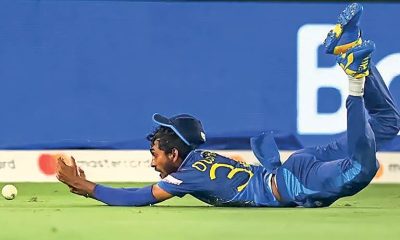
 Sports5 days ago
Sports5 days agoHow Sri Lanka fumbled their Champions Trophy spot
-
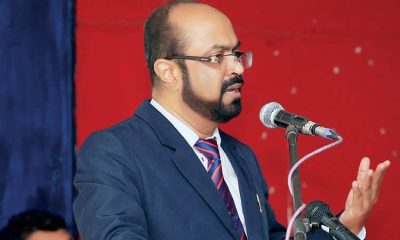
 News6 days ago
News6 days agoSC notices Power Minister and several others over FR petition alleging govt. set to incur loss exceeding Rs 3bn due to irregular tender
-
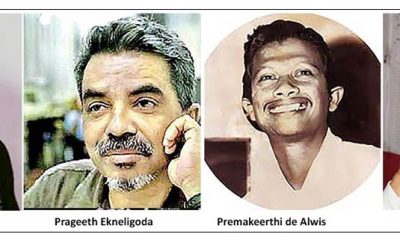
 Features5 days ago
Features5 days agoThe Murder of a Journalist
-
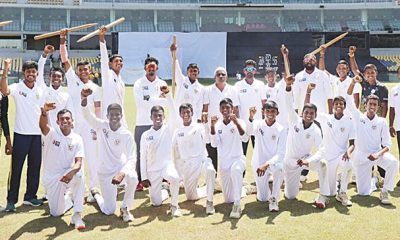
 Sports5 days ago
Sports5 days agoMahinda earn long awaited Tier ‘A’ promotion
-
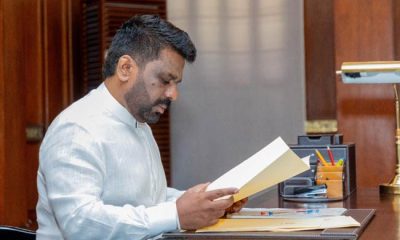
 Features5 days ago
Features5 days agoExcellent Budget by AKD, NPP Inexperience is the Government’s Enemy
-

 News6 days ago
News6 days agoMobile number portability to be introduced in June
-
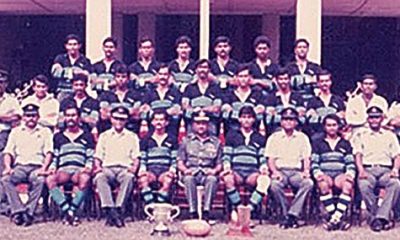
 Sports4 days ago
Sports4 days agoAir Force Rugby on the path to its glorious past







